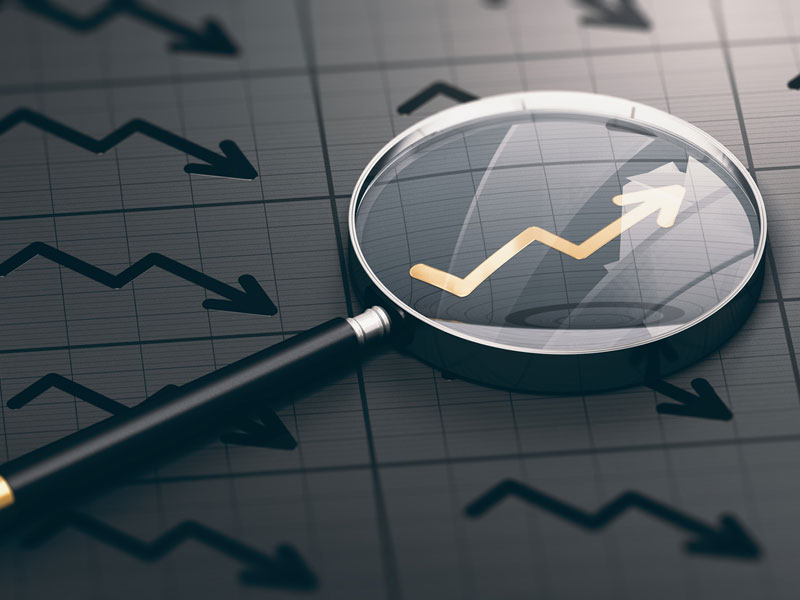
An inflation gauge that is closely monitored by the Federal Reserve jumped 6.1% in January compared with a year ago, the latest evidence that Americans are enduring sharp price increases that will likely worsen after Russia’s invasion of Ukraine.
The figure reported Friday by the Commerce Department was the largest year-over-year rise since 1982. Excluding volatile food and energy prices, core inflation increased 5.2% in January from a year earlier.
Robust consumer spending has combined with widespread product and worker shortages to create the highest inflation in four decades — a heavy burden for U.S. households, especially lower-income families faced with elevated costs for food, fuel and rent.
At the same time, consumers as a whole largely shrugged off the higher prices last month and boosted their spending 2.1% from December to January, Friday’s report said, an encouraging sign for the economy and the job market. That was a sharp improvement from December, when spending fell. Americans across the income scale have been receiving pay raises and have amassed more savings than they had before the pandemic struck two years ago. That expanded pool of savings provides fuel for future spending.
Inflation, though, is expected to remain high and perhaps accelerate in the coming months, especially with Russia’s invasion likely disrupting oil and gas exports. The costs of other commodities that are produced in Ukraine, such as wheat and aluminum, have also increased.
President Joe Biden said Thursday that he would do “everything I can” to keep gas prices in check. Biden did not spell out details, though he mentioned the possibility of releasing more oil from the nation’s strategic reserves. He also warned that oil and gas companies “should not exploit this moment” by raising prices at the pump.
On Friday, oil prices were steady after they had reached $100 a barrel in volatile trading on Thursday, before falling back to $92, about where they had started the day. Still, economists at JPMorgan have forecast that oil could reach $110 a barrel as Russia’s invasion of Ukraine escalates. Economists at BMO Capital Markets have estimated that each $10-a-barrel increase translates into a 0.4 percentage point rise in inflation.
A separate report Friday showed that orders for long-lasting factory goods rose sharply in January, led by a rise in demand for airplanes. The figures indicate that many companies are willing to invest more in industrial equipment and other goods, a sign of confidence in the economy.
“Overall, the real economy appears to be in stronger health than we feared,” said Paul Ashworth, chief U.S. economist at Capital Economics, a forecasting firm.
Incomes were unchanged last month, largely because the monthly child tax credit payments that were included in Biden’s $1.9-trillion financial support package expired. A new study concluded that the end of the payments led to a jump in child poverty.
But wages and salaries rose 0.5% from December to January, Friday’s report showed. And Social Security payments increased because a large cost-of-living adjustment, reflecting last year’s jump in inflation, took effect.
Russia’s invasion and the likely resulting rise in inflation have increased pressure on the Federal Reserve, which is expected to raise interest rates by a quarter-point as many as five or six times this year beginning in March. The Fed’s delicate task — to raise rates enough to restrain inflation, without going so far as to tip the economy into recession — has now become more difficult.
Higher gas prices typically accelerate inflation, which would heighten the need for rate increases. But costlier gas can also weaken the economy by slowing consumer spending, something that would normally lead the Fed to leave rates unchanged.
Fed officials are acknowledging that the invasion of Ukraine has complicated the economic outlook, but say that so far they are sticking with their plans for rate hikes.
Loretta Mester, president of the Federal Reserve Bank of Cleveland, said Thursday that she supported a series of rate hikes beginning in March. But she said the Fed should remain flexible: Faster rate hikes might be needed, she said, if inflation hasn’t begun to fade by mid-year, or more gradual increases if inflation is slowing.
“The implications of the unfolding situation in Ukraine for the medium-run economic outlook in the U.S. will also be a consideration,” she said. Other Fed officials have offered similar remarks this week.
Late Thursday, Fed governor Christopher Waller said he would support a half-point rate hike in March if inflation remains high. But most officials have said they would prefer to raise rates by the traditional quarter-percentage-point increment.
Fed officials want inflation to fall back to its 2% target, as measured by the Commerce Department’s gauge, released Friday. A separate measure, the consumer price index, released two weeks ago, showed that inflation reached 7.5% in January from a year earlier, also a four-decade high.
In December, Fed officials projected that inflation would decline to just 2.6%, according to their preferred measure, by the end of this year, which most economists see as increasingly unlikely. The Fed will release updated projections at its March meeting.
January’s data show inflation was already picking up before the invasion. From December to January, prices rose 0.6%, up from 0.5% in the previous month.
There are early indications that consumer spending has stayed healthy in February, boosted by the rapid fading of the omicron wave of the coronavirus. JPMorgan Chase said that spending on its credit cards for airline tickets, hotel rooms, and restaurant meals rose in the first half of this month.
The JPMorgan Chase Institute also recently released data showing that cash balances remain elevated among their customers, including those with lower incomes. Bank account balances for Americans with less than $26,000 in income were 65% higher at the end of last year than they were two years before.
The combination of higher pay and enhanced savings suggests that Americans may be able to keep spending at a solid pace in the coming months, thereby sustaining the economy’s inflationary pressures.